Looking for the perfect online course platform?
You’re in the right place.
I’ve personally tested dozens of platforms over the years.
This guide will cut through the noise
| Platform | Community feature | Pricing starts at |
| Kajabi – Best all-in-one ⚙️ | Yes with gamification | $89/mo |
| Podia – Best value for money | Yes, but basic | $39/mo |
| Thinkific – A good Teachable alternative | Yes, but basic | $49/mo |
| Teachable – Specialist in courses | Yes | $39/mo |
| LearnWorlds – For academic courses | Yes, but feels old-school | $29/mo |
| Passion.io – Mobile-centric platform 📱 | Yes | $119/mo |
| Systeme.io – ClickFunnels + LMS | No | $17/mo |
| LearnDash – WordPress-based flexible solution | No. But BuddyBoss integration | $199/year |
| Thrive Learn | No | $495 for a lifetime |
| Kartra | No | $49/mo |
| Teachery | No | $49/mo |
| Ruzuku | No | $99/mo |
| LifterLMS | No | $299/year |
Kajabi – Best for advanced course creators ⚙

Kajabi is a powerful all-in-one course creation platform with excellent marketing features.
It’s not a course creation platform, but a digital selling platform with marketing automation capabilities. It’s a hybrid between ClickFunnels and Teachable.
Key features:
- Courses: Advanced features, gamified community feature, and in-depth student engagement analytics
- Email marketing: Robust email features with automation
- Website builder: Flexible, and even replaces WordPress/Squarespace
- Marketing automation: Trigger-based workflows (no need of Zapier)
- Mobile app: Both for iOS and Android with push notifications and in-app purchases
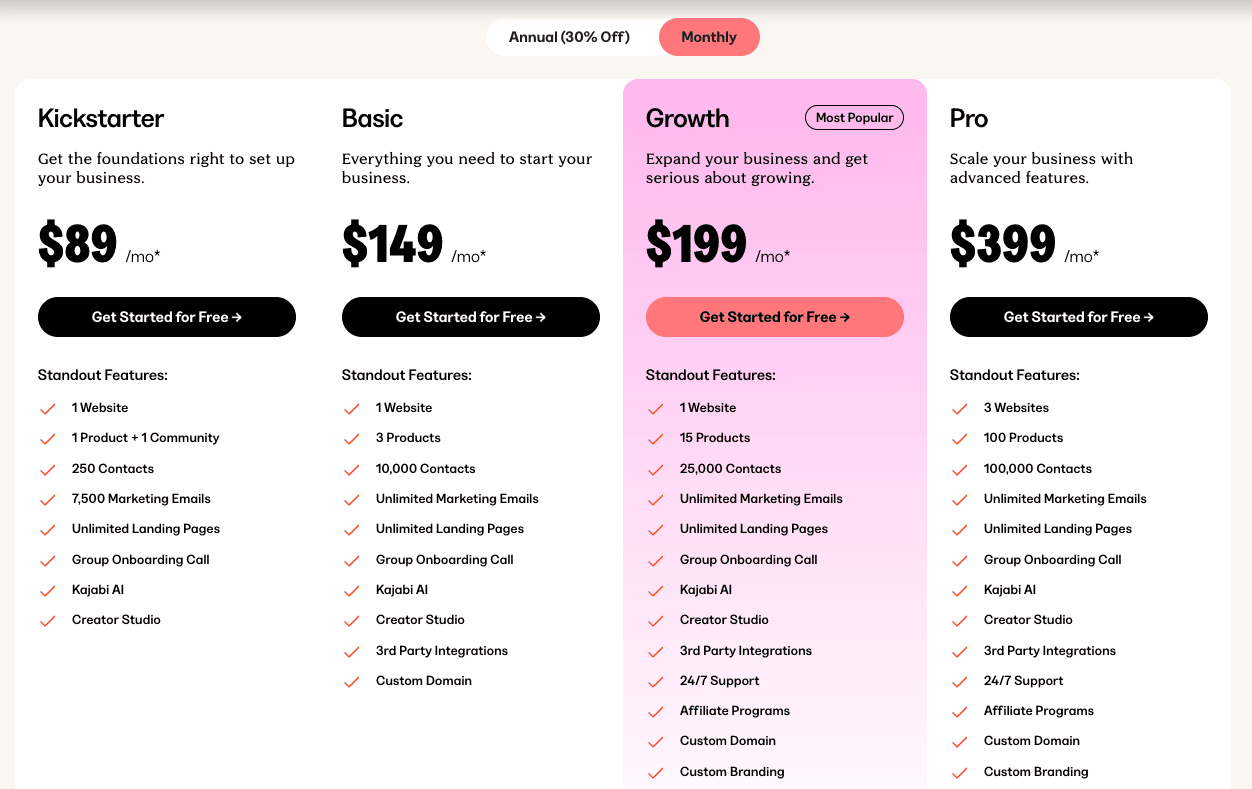
When it comes to pricing, Kajabi is expensive. The pricing starts at $89/mo. You can consider going with annual billing to get 30% OFF.
The Basic Plan is restrictive, allowing only 3 products and 3 funnels.
Even the Growth Plan at $199/mo, has 15 product restrictions which is really a big downside if you are the one creating multiple “Atomic courses”!
If you think Kajabi is not affordable for you, consider looking at its alternatives.
Pros 👍
- Offers deep feature set including student-level analytics and retention graphs.
- Rich community feature with gamification.
- Powerful website builder with funnel feature.
- Robust email marketing feature that integrates with automation engine.
- Includes native webinars (Kajabi Events).
- Powerful in-built automations (trigger and actions) and comprehensive integrations to save on additional tools like Zapier.
- Provides iOS and Android apps with push notifications and in-app purchases.
Cons 👎
- Learning curve for beginners due to extensive features.
- High pricing starting at $149/month.
- Limitations on the number of products you can create
If you’re interested in learning more about Kajabi, you can check out this review.
🏆 Bottomline: Kajabi offers a comprehensive suite of features to manage your entire business in one place. However, it’s worth noting that the number of products you can create may be limited depending on your chosen plan, which could be restrictive for some users.
Podia – Best value for money
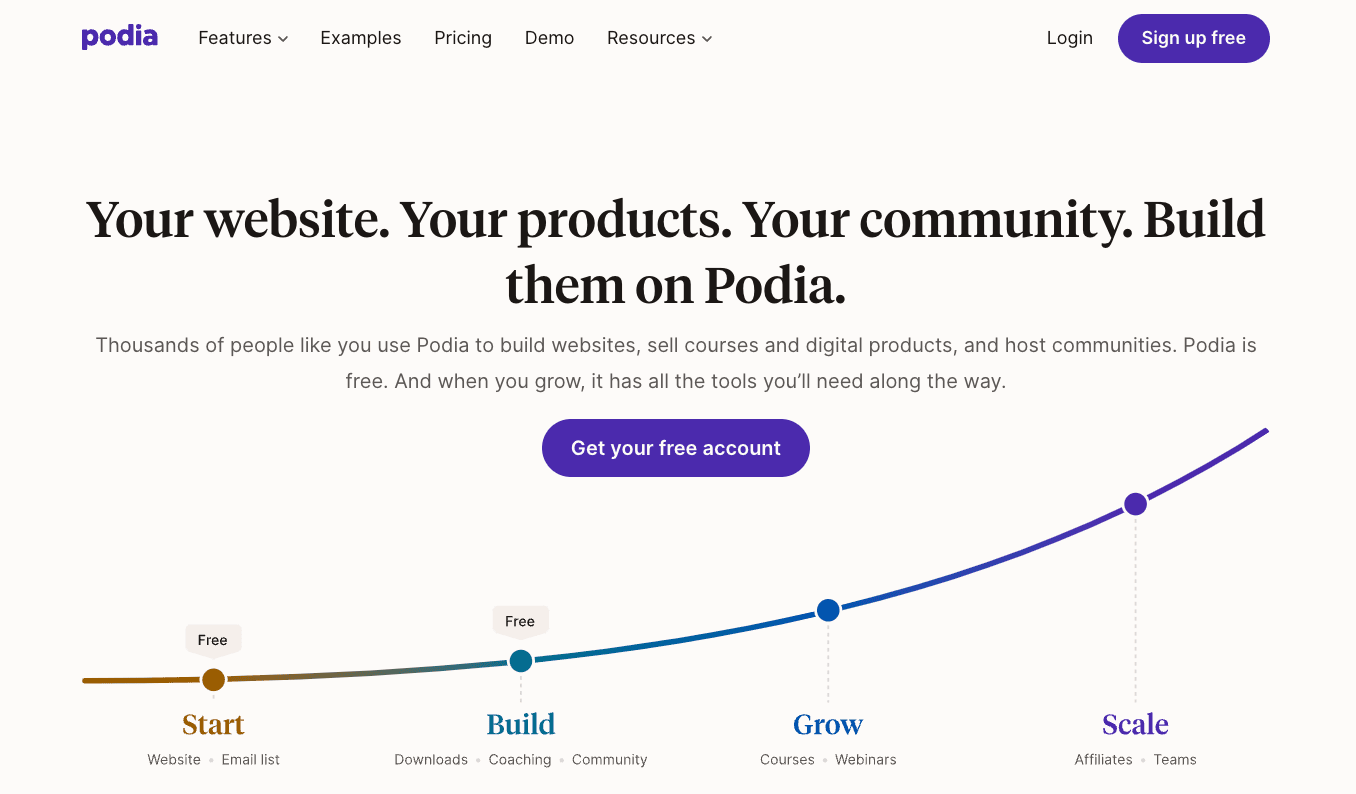
Podia is an all-in-one platform that allows you to sell your courses, community, digital products, host webinars (through Zoom and YT Live integrations) and more.
Key features:
- Courses: Unlimited hosting, various formats, drip scheduling, completion certificates
- Digital product selling: Supports digital product sales with embedded checkouts
- Community: Basic features, membership types, no mobile app
- Marketing: Coupons, bundling, upsells; lacks advanced features
- Email: Built-in tool with broadcasts, sequences, tags, segments, automation
- Website builder: Basic storefront and landing page builder with limited options
👎 While Podia is an all-in-one platform, it lacks depth in its features.
For instance, it doesn’t provide per-student course analytics, and its community feature is quite basic, lacking support for mobile apps.
Additionally, its website builder is very basic.
Nevertheless, Podia is a suitable platform for those who want to avoid technical complexities and unnecessary features, focusing solely on sales and value delivery.
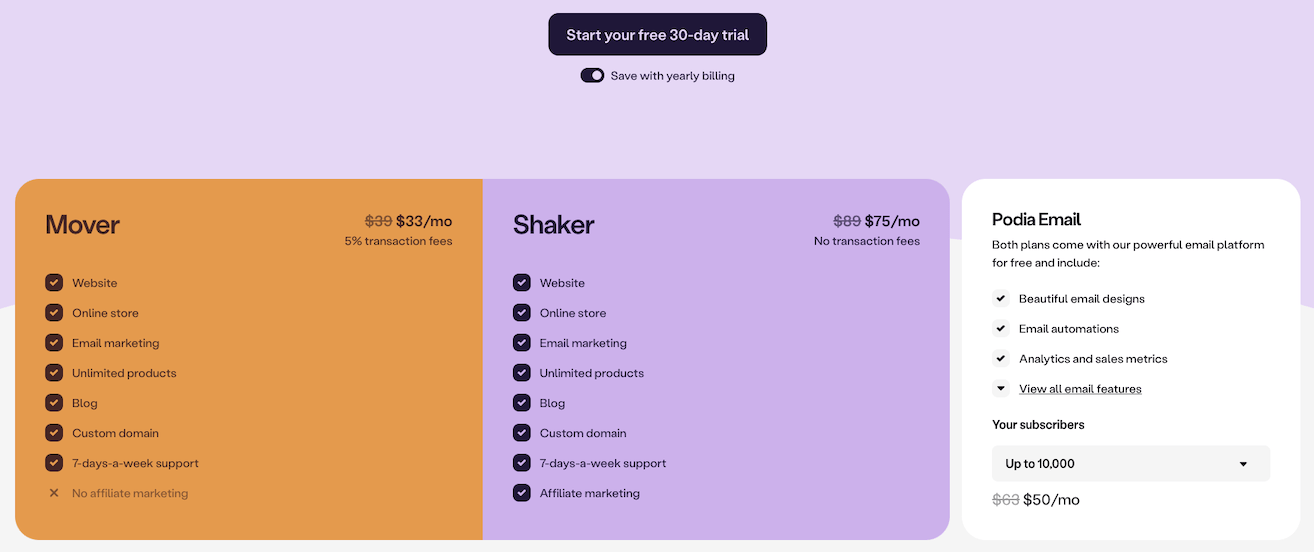
Podia keeps things simple with just 2 plans: Mover and Shaker.
Most creators start with the Mover plan because it covers the basics.
If you want to avoid transaction fees and need affiliate marketing features, the Shaker plan is your best bet.
💌 To use Podia for email marketing, you’ll need their email add-on. This costs $63/month for up to 10,000 subscribers, increasing to $413/month for up to 100,000 subscribers. This is on top of your regular plan cost.
Pros 👍
- Simple to use (without a lot of bells and whistles), making it beginner-friendly.
- Really good UI/UX. You’ll love using it.
- Supports selling digital products.
- Comes with email broadcasts, campaigns (sequences), and automations.
- Good value for money (compared to say Teachable).
Cons 👎
- Basic community feature
- It lacks a mobile app
- Doesn’t have advanced course features like course compliance and student-level analytics and heatmaps unlike Teachable or even Kajabi.
- The page builder customization options are very limited. You still need to use WordPress
- Lacks advanced automations features (unlike Kajabi).
You can read the complete review of Podia here.
🏆 Bottomline: It is a jack-of-all-trades but master of none and has really limited community and website-building capabilities. Moreover, it doesn’t come with any mobile apps
Thinkific – A good Teachable alternative

Thinkific is a feature-rich and affordable platform for course creators. It comes with the ability to create courses and communities.
Compared to Teachable, it has some powerful features like:
- Communities
- Groups
- Live lessons (integrates with Zoom)
- Advanced course-building features (like randomized quiz banks, prerequisite lessons, members-only website pages, Brillium exams integration, etc.)
Also, it supports more content types in the course content.
You can add:
- Presentations
- Multimedia files
- Live lessons
- Assignments
- Exams
- Surveys, and more!
It also supports Adobe Captivate & Articulate Storyline files.
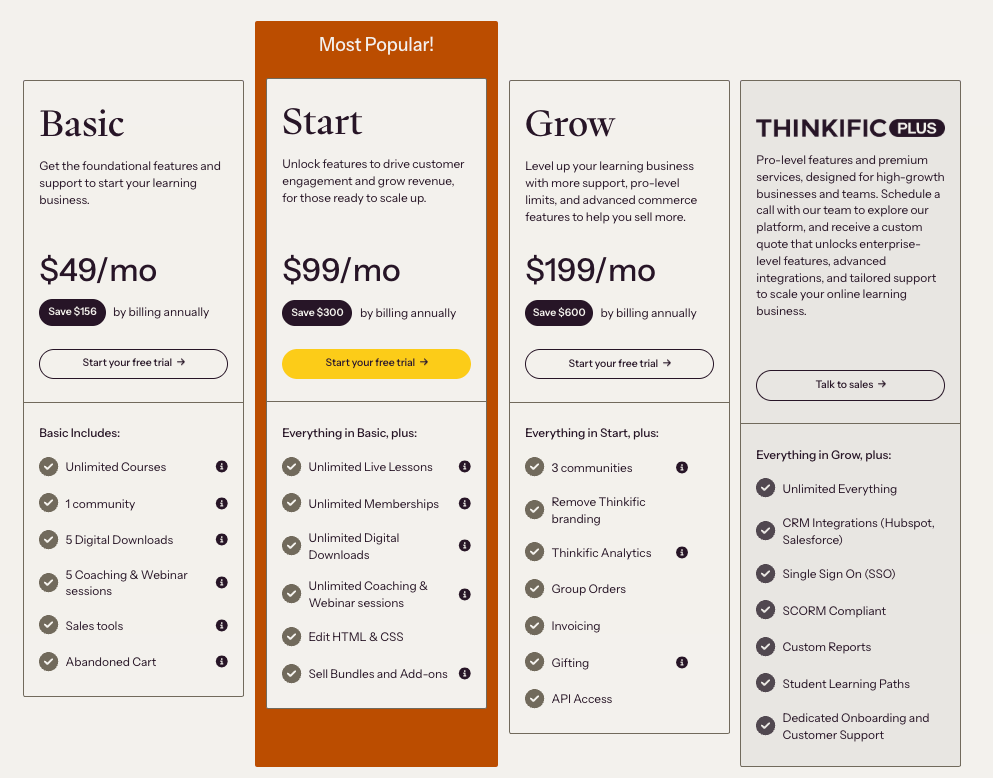
Most people either go with the Basic plan or the Start plan. All of the plans come with all of the features, except for the number of communities or spaces that you can create inside each of them.
Compared to other platforms out there, there’s no transaction fee and no limits on the number of courses that you can create.
Pros 👍
- It doesn’t charge any transaction fees even on its free plan, unlike Teachable’s Basic plan.
- It provides advanced course-building features like live lessons, randomized quizzes, exams, private & hidden courses, etc.
- It is a completely white-labelled solution and is suitable for agencies providing instructional design services.
- Ability to create communities.
Cons 👎
- The marketing features are pretty basic. There are no funnels or automation features. You may need to hook it up with Zapier.
- It doesn’t handle EU VAT.
Check out our Thinkific review to learn more about it.
🏆 Bottomline: Thinkific is a really good alternative to Teachable. It has almost all the features that Teachable has, but without its downsides such as product creation limitations and transaction fees. It’s a specialist in course creation!
Teachable – Specialist in courses
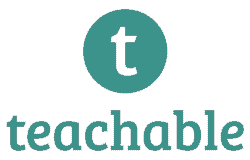
Teachable is a course platform that allows you to create and sell:
- Online courses: Specialist in course creation with advanced compliance features, including enforced video watching, lecture order, quiz completion, also has per-student video analytics feature for better accountability.
- Coaching: Offers one-on-one or small-group professional coaching to provide additional value to customers
These features help ensure that students actually complete the course which in turn helps increase your course completion rate.
Unlike tools like Podia or Kajabi, it’s not an all-in-one platform and doesn’t come with communities, email marketing, etc.
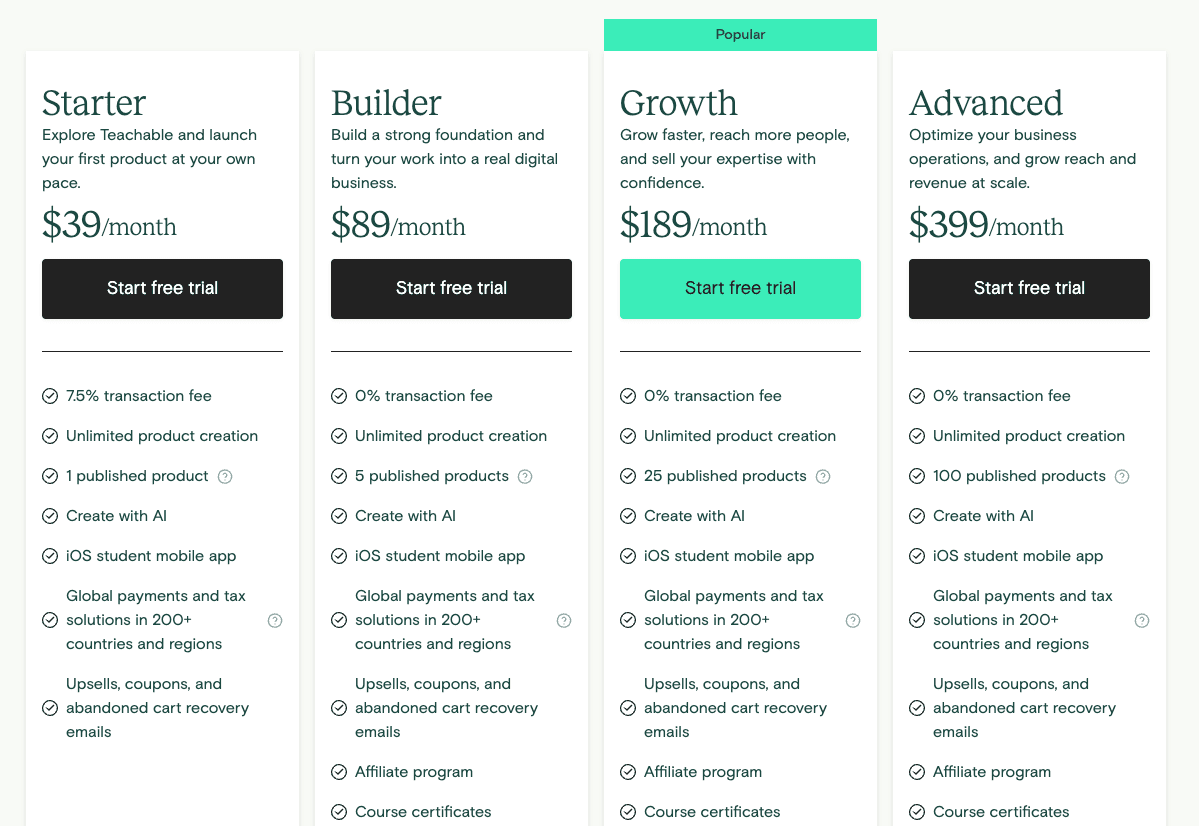
Their Starter plan starts from $39/month but also charges you a 7.5% transaction fee.
If you want to eliminate the transaction fee and publish up to 25 products, you must choose their Growth plan at $189 per month.
They also have an enterprise plan for businesses looking for premium support.
👎 However, this is not a good value for money, considering that you can get better options at the same price with all-in-one platforms like Podia or even Kajabi.
You can look at some of these Teachable alternatives.
👉 In 2023, Teachable drastically hiked prices, especially for unlimited course users. The fees skyrocketed from $40 to $600 per month, causing outrage. Many users fled to Thinkific and Kajabi, feeling trapped between paying exorbitant fees or losing valuable data and rebuilding elsewhere.
You can read my complete review of Teachable to learn more about it.
Pros 👍
- Allows multiple content formats per lesson
- Offers course compliance and student engagement analytics
- Includes “Lesson notes” for timestamped student notes
- Optimized checkout design with guarantee badges and order bumps
- Automated tax compliance and EU VAT calculation
Cons 👎
- Basic plan ($59/month) allows only 5 products and charges a 5% transaction fee
- No drag-and-drop page builder, only simple modules
- Only has an iOS app for students
🏆 Bottomline: I wouldn’t recommend Teachable for most people, given their recent changes. Their $39/month plan now limits you to only 1 product and still charges a 7.5% transaction fee. Unless you’re okay with these restrictions, it’s probably not the best choice for most course creators.
LearnWorlds – For academic courses

LearnWorlds is an online course platform best suitable for academic institutions and educational organizations.
It focuses on student engagement and enhances learning with:
- Interactive videos (good for academic usecases)
- Ebooks
- Assessments
- Certificates
- SCORMs
- Surveys, and much more.
👎 It comes with a lot of features including an e-book creator (better use Canva!), but I found the platform to be really cluttered and the UI and UX deserves a lot of improvements.
When it comes to marketing, it supports upsells and cross-sells with promotions, coupons, and payment plans.
It also has a branded mobile app that is completely white-labeled. The app supports in-app purchases and push notifications.

LearnWorlds’ lowest pricing starts at $29/mo.
If you are a professional trainer, you can go with a $99/mo plan and get more features like memberships, subscriptions, blogs, and no transaction fee (for high-volume sales).
Pros 👍
- It is a completely white-labeled solution (good if you’re serving corporate clients).
- Supports upsells, cross-sells, course bundles, etc.
- It supports SCORM compliance, best for universities.
- Has iOS and Android apps with in-app purchases and push notifications.
Cons 👎
- Their UI/UX feels cluttered and deserves some love. They need to focus on this than extra bells and whistles.
- The lowest plan charges a $5 fee per course sale.
- The basic plan lacks powerful features like a customizable course player, question banks, affiliate management, custom certificates, etc.
- To get a completely white-labelled solution, you need to spend $299/mo.
You can read our complete review of LearnWorlds here.
🏆 Bottomline: LearnWorlds is the best solution for academic institutions and educators as it has powerful features to track students’ progress and also to increase their engagement. It even comes with marketing features like upsells, cross-sells, and a pop-up builder. But the main downside is UI/UX is cluttered.
Passion.io – Mobile-centric platform 📱
Passion.io is an online platform that helps people create their own custom-branded mobile apps without having to write any code.

The app you create with Passion.io will be accessible on many devices, including smartphones, tablets, TVs, and laptops.
- Unlimited Courses
- Group Challenges
- Progress Tracking
- Motion-based Exercises
- Branded Notifications
👉 Most of the people I see using this app would be yoga instructors, fitness instructors who want to give transformational results to their students through better accountability.
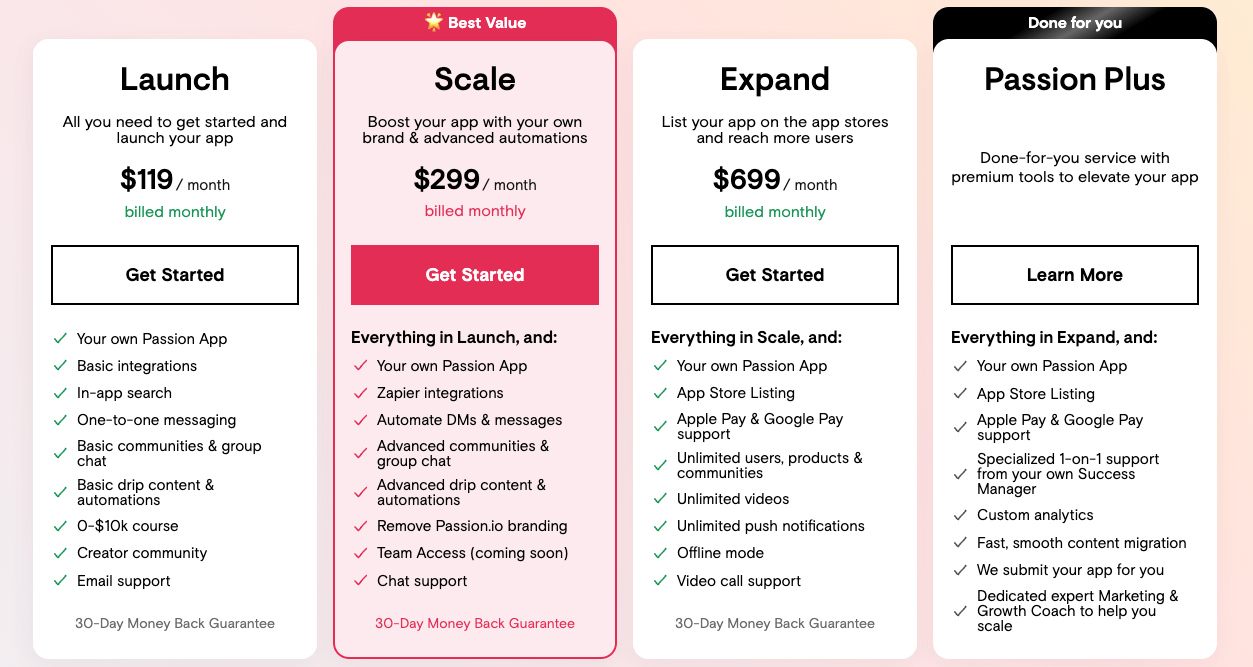
Their monthly Launch plan costs you $119/month. But in this plan, you don’t have some features like courses, community push notifications, and removal of branding.
If you want these features (which really matter), you can choose their Scale plan at $299/month.
You’ll be also provided the option to publish these apps on the App Store and Google Play, where they can be downloaded by anyone.
We recommend you to checkout Passion.io’s complete review.
🏆 Bottomline: Overall, Passion.io is a fantastic platform for creating custom-branded apps that are instantly accessible on any platform without the need for coding. Although it currently has some limitations, it also has a number of unique features (like activity tracking) that make it worth considering for say fitness coaches.
Systeme.io – ClickFunnels + LMS

Systeme.io is a fascinating hybrid – think ClickFunnels meets course platform, but at a fraction of the price.
It’s an all-in-one marketing platform that lets you create sales funnels:
- Host courses
- Manage email marketing
- Run webinars
Even set up affiliate programs – all under one roof.
For course creators, Systeme offers a simple but effective LMS. While it lacks some advanced features like certificates or quizzes, it handles the basics well with video hosting, text lessons, and drip scheduling.
The platform shines with its intuitive funnel builder that makes creating sales sequences straightforward. You can quickly set up everything from lead generation to webinar registration funnels with their templates.
What really sets Systeme apart is its pricing.
While platforms like ClickFunnels charge $97/month for basic features and $297 for the full suite, Systeme gives you everything for just $17/month.
There’s even a forever-free plan if you’re just getting started.
You can read our Systeme.io review to learn more about it.
Pros 👍
- No transaction fees: Keep more of your course revenue
- Forever-free plan: Great for beginners to test the waters
- All-in-one solution: No need for multiple tools or complex integrations
- Extremely affordable: Complete marketing suite starting at just $47/month
Cons 👎
- No community features: You’ll need another solution for student interaction
- Simple automation: Lacks some advanced conditional logic features
- Limited integrations: May not connect with all your existing tools
- Basic page builder: Limited design flexibility compared to dedicated tools
Bottomline: Systeme.io is perfect for budget-conscious course creators and digital entrepreneurs who want an all-in-one solution without the premium price tag. You get 80% of what the big players offer at about 20% of the cost. If you’re starting out or scaling up without massive technical requirements, Systeme offers exceptional value.
LearnDash – WordPress-based flexible solution

LearnDash is a WordPress-based LMS that is highly flexible and allows for a high degree of customization.
As a self-hosted solution, LearnDash does not come with video hosting built-in, so users will need to utilize an external video hosting platform like Vimeo or Wistia.
But it does come with various features like:
- Drag & drop course builder (with drip feed)
- Membership
- Student-level course progress tracking (with Propanel)
- Advanced quizzing
- Assignment management
- Flexible prerequisites (similar to course compliance)
The platform is highly customizable, with full control over course player customization and the ability to integrate other plugins like Elementor, CartFlows, Gamipress, and WooCommerce for better design and marketing flexibility.
Also, it supports Zapier integration.
However, as with any other WordPress-based solution, LearnDash requires a certain level of technical knowledge and skills to set up and manage effectively.
Overall:
LearnDash is a great choice for those who want a powerful and flexible online course platform. There are definitely technical hurdles to overcome, but the cost is reasonable (at $199/year) compared to other popular course platforms out there.
Pros 👍
- Reuse topics and lessons across multiple courses
- Drip-feed functionality to prevent students from binge-watching courses
- Video progression support to hold students accountable
- Highly customizable and comes with various add-ons.
- Flexible integrations with other WordPress plugins like Elementor, GamiPress, and whatnot.
Cons 👎
- Requires technical knowledge and skills to set up and manage effectively.
- Similar to any other WordPress plugins, the plugin conflicts and tech problems are a thing!
- Doesn’t have direct compliance with SCORM or xAPI
- No free trial available
Check out LearnDash’s complete review if this is something you’re looking for.
🏆 Bottomline: LearnDash is a great choice for those who want a powerful and flexible online course platform based on WordPress at a reasonable cost. It requires good technical skills to even get started, but it provides unparalleled flexibility by plugging right into the WordPress ecosystem.
Thrive Learn

ThriveCart has recently introduced an LMS tool called, Thrive Learn to create the courses right inside the platform.
It is offered for free to existing users of ThriveCart.
There is a premium version of this called Learn+, which costs an additional fee to unlock extra powerful features.
Both Learn and Learn+ allow everything unlimited (like unlimited courses, unlimited modules, unlimited lessons, and unlimited students).
The premium features you get with Learn+ include:
- Advanced sequences
- Bundles
- Team Access
- Student import
- Featured content
- CNAME functionality
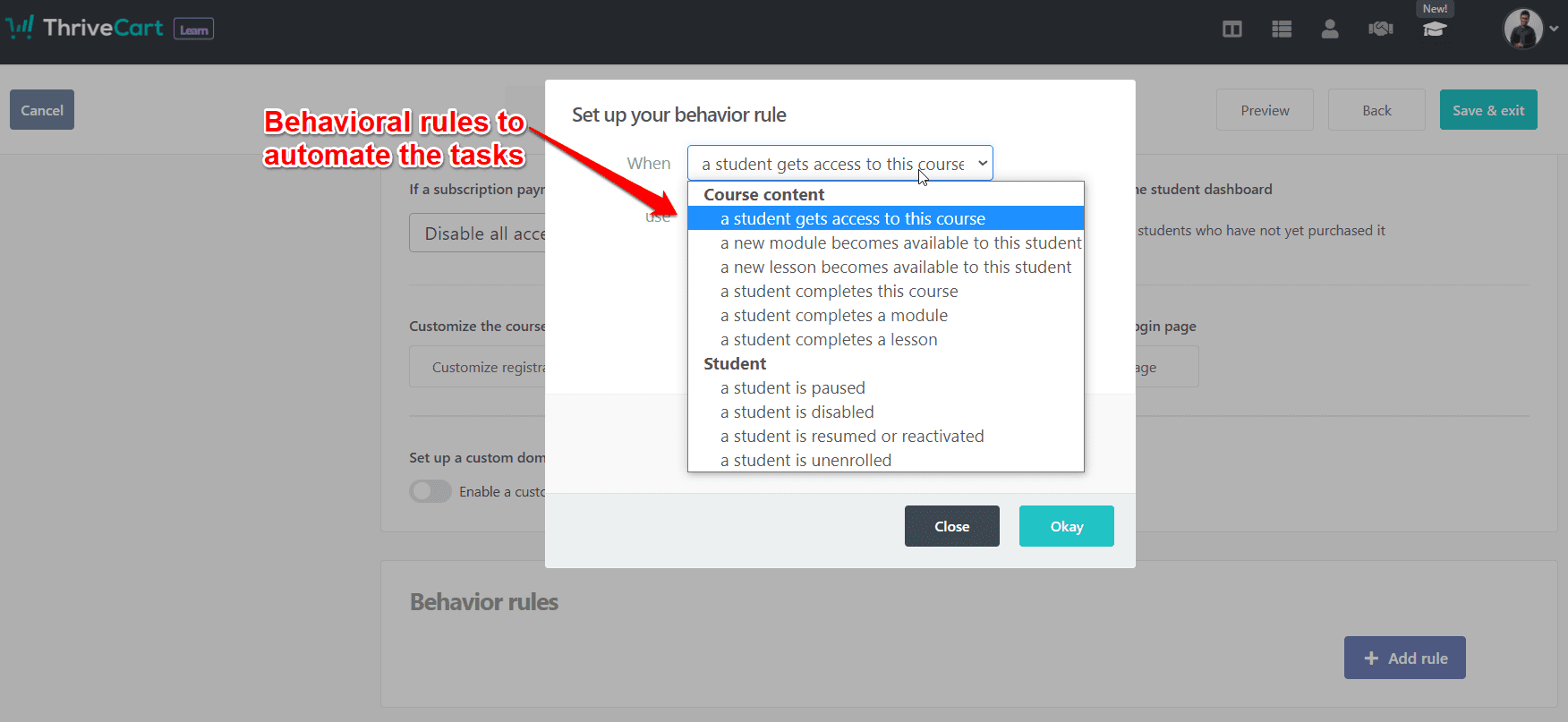
It has something called behavioural rules that help automate the course tasks. (Refer to the screenshot above to know all the rules available).
ThriveCart’s (review) unique selling proposition is its lifetime deal costing $495. Pay once, and use for a lifetime.
Kartra

Kartra is a powerful all-in-one marketing solution for selling digital and physical products.
It serves as an alternative to ClickFunnels and Kajabi, offering a comprehensive suite of tools for online businesses.
The platform doesn’t have specialized course creation features like modules, lessons, and quizzes!
Instead, Kartra offers a membership system where you can:
- Structure content into modules with individual membership pages
- Create multiple membership levels (Gold, Silver, Bronze)
- Set up drip scheduling to control content release
- Include progress tracking via sidebar content
- Add upsells within your course content
Kartra provides rich video analytics to track student engagement and its built-in funnel builder streamlines course marketing.
Starting at $49/month, it’s cost-effective compared to Kajabi or ClickFunnels.
Additional features that complement course creation include:
- Website/landing page builder – that’s quite powerful
- Powerful email marketing with automation sequences
- Webinar functionality for live and evergreen sessions
- Built-in helpdesk with live chat support
- Calendar booking for scheduling coaching sessions
In comparison to competitors, if you’re primarily focused on course creation, Kajabi makes more sense than Kartra, even at a higher price point, as it offers better course delivery tools, a built-in community feature, and mobile apps.
👉 Bottomline: Overall, Kartra is ideal for entrepreneurs who value convenience and automation over specialized tools. While its membership feature works well for delivering course content, it isn’t as robust as dedicated course platforms like Teachable.
Teachery

Teachery is a dedicated course platform that is popular for its simplicity. You can get started with it easily in no time.
You can add video, audio, or text as lessons or sub-lessons. Like Thinkific, you can completely customize the course player to match your brand.
Unlike Teachable or other platforms, it doesn’t come with video hosting. You need to again spend money on Vimeo or Wistia. Or preferably Bunny Stream as it comes with pay-as-you-go billing for video hosting.
For marketing, it supports custom domains, affiliates, coupons, upsells, course bundles, etc.
Teachery’s (review) costs $49/mo with locked-in pricing and it doesn’t charge any transactional fees.
Ruzuku
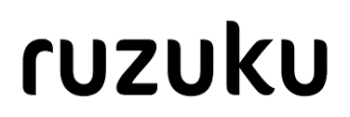
Ruzuku is a solid choice for course creation, though it has some limitations. The platform feels somewhat dated and lacks certain cutting-edge features that could make it a top contender.
Its strengths include templates for quick course creation and support for multiple instructors and managers per course – a useful feature for collaborative teaching.
Where Ruzuku shines is in student engagement. It offers calendar-scheduled live courses with automatic email notifications, video broadcasts with group chats, and automatic recording.
The platform also encourages active participation through course-wide Q&A sessions, forums, and discussion prompts tied to specific activities or content.
They have a free plan that lets you work with up to 5 students.
Want to teach more people? You’ll need to upgrade to their Core plan at $99/mo for unlimited students.
LifterLMS

LifterLMS is one of the feature-rich WordPress LMS plugins that offers powerful features. These include – multi instructor, course export, discussion areas, course reviews, quizzes, quiz timers, content dripping, etc.
For marketing, it supports upsells, coupons, bundles, pre-selling, affiliates, and much more.
For student engagement, it supports: Achievement badges, Certificates, Personalized email, Social learning, Private coaching, Text messaging. Etc.
It also supports memberships for you to earn recurring revenue. The membership features include Course bundles, content Restrictions, private group discussions, etc.
If you compare LifterLMS with LearnDash, LifterLMS is more expensive but it offers a free plugin to get started. Also, LearnDash is more popular than LifterLMS.
Conclusion
Here’s what it boils down to:
If you want an all-in-one solution that handles everything without technical headaches, Kajabi is your best bet. Yes, you’ll pay more, but the depth of features and seamless integration is worth it for serious course creators who don’t want platform hassles.
For those watching their budget but still wanting solid features, Podia offers incredible value. It gives you most of what you need without breaking the bank – perfect for creators just starting out or scaling up carefully.
For those who want something in between, Systeme.io offers a surprising amount of features at a fraction of the cost of premium platforms. If ClickFunnels and Podia had a baby 👶. This is it.
If you’re a WordPress user, who want maximum flexibility and don’t mind a bit of technical work should go with LearnDash.
The learning curve is steeper, but you’ll get unmatched customization options and lower long-term costs.






